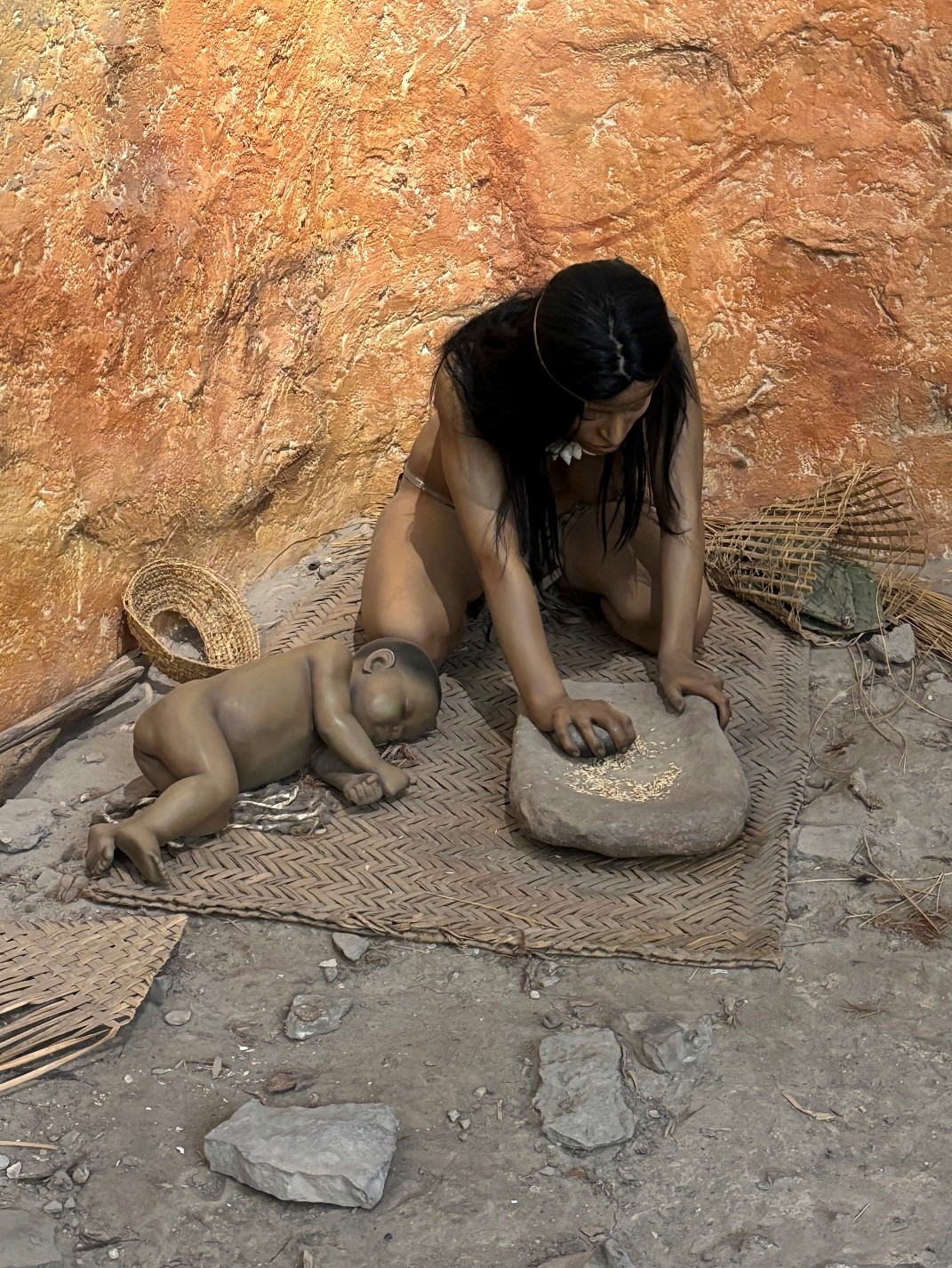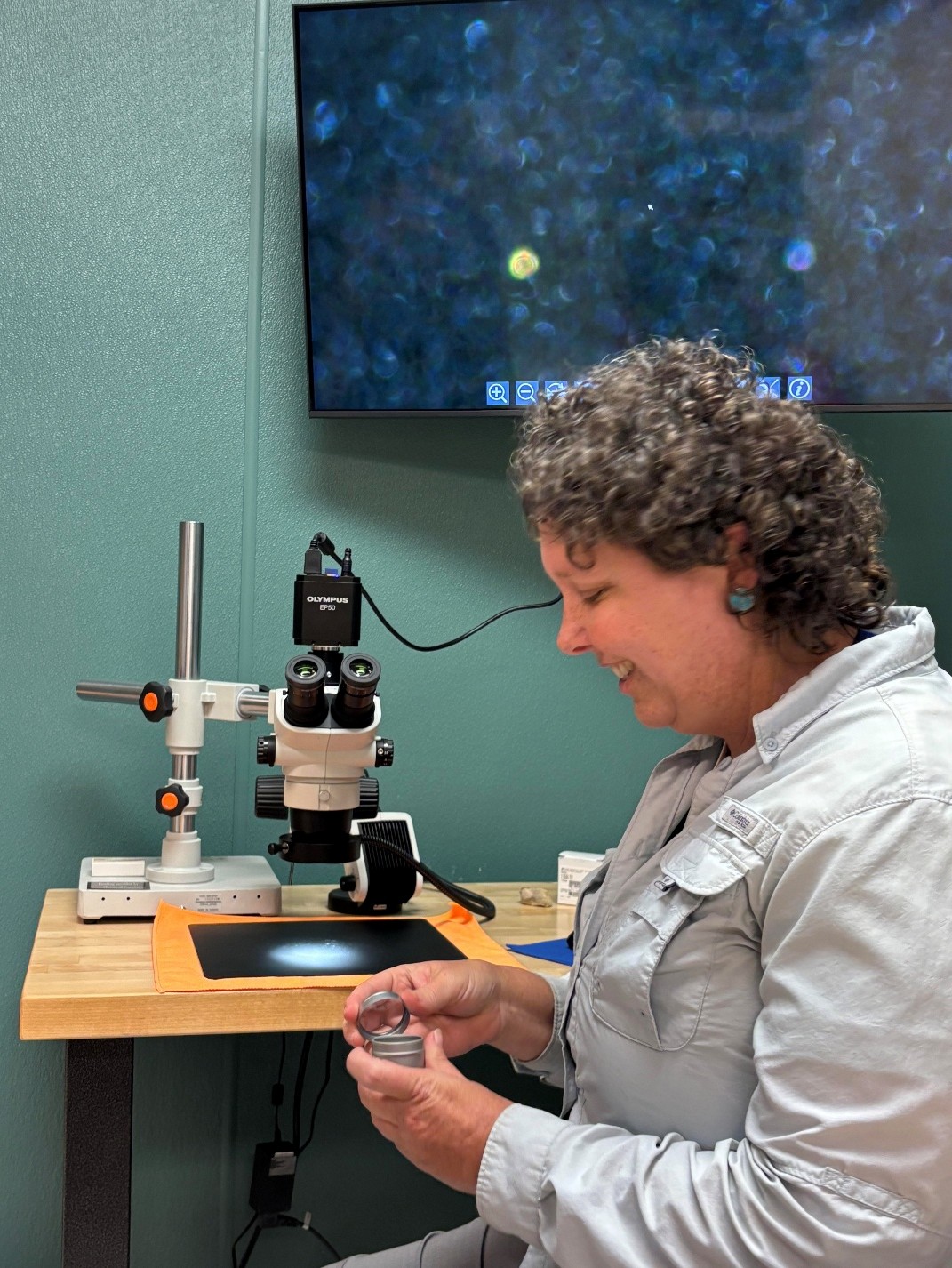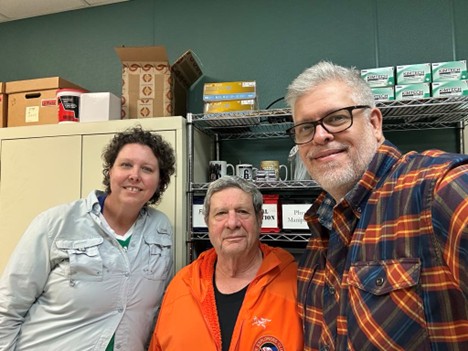Indigenous Peoples of the Lower Pecos Canyonlands, Their Rock Art, and Ongoing Preservation Efforts by the Witte Museum, Shumla, and Leading Archaeologists
Introduction
The Lower Pecos Canyonlands, located in present-day southwestern Texas, is an area rich in prehistoric cultural history. The region, characterized by its rugged canyons, rock shelters, and varied ecological zones, provided vital resources to the early inhabitants of North America, including Paleo-Indians and Archaic peoples. The Coahuiltecans and Jumanos are two groups that are historically associated with this region, although their origins, cultural practices, and time periods differ significantly.
The preservation of this rock art has been a key focus for various research institutions, most notably the Witte Museum and Shumla Archaeological Research and Education Center. In addition, numerous prominent archaeologists have played a vital role in uncovering the history of the valley’s original inhabitants and their cultural practices. This report explores the indigenous peoples of the Lower Pecos Canyonlands, the significance of their rock art, and the critical contributions of the Witte Museum, Shumla, and key archaeologists to the preservation and interpretation of these ancient cultural treasures.
Geography of the Lower Pecos River Valley
The Lower Pecos Canyonlands lie along the border of Texas and northern Mexico. This area is defined by rugged cliffs, deep canyons, and a harsh desert environment. The Pecos River, which flows through the valley, has historically provided an essential water source to the region’s inhabitants. The valley’s arid climate and sheltered environment have contributed to the remarkable preservation of the rock art, making it an invaluable site for archaeological study.
Indigenous Peoples of the Lower Pecos River Valley
The Lower Pecos Canyonlands have a rich archaeological record of human habitation that spans over 13,000 years. The indigenous peoples who inhabited the region were part of larger cultural traditions that extended across the North American Southwest and northern Mexico.
Early Inhabitants: The Paleo-Indians and Archaic Peoples
The Paleo-Indian period, which began approximately 13,000 years ago and lasted until around 8,000 years ago, marks the earliest known phase of human occupation in North America. Paleo-Indians were hunter-gatherers who primarily relied on large game hunting, including mammoths, mastodons, and bison. As the environment became warmer and drier, these groups adapted to a more plant- and small game-based subsistence strategy. This period marked the transition into the Archaic period (circa 8000 BCE – 2000 BCE), during which the inhabitants of the valley began developing new tools, refining hunting techniques, and starting to experiment with early forms of agriculture. The Lower Pecos Canyonlands, with its complex landscape of canyons, rock shelters, and rivers, provided a favorable environment for these early peoples.
Archaeological Evidence of the Paleo-Indians:
-
- Sites: Notable Paleo-Indian archaeological sites in the Lower Pecos Canyonlands include the Folsom site and the Loma Alta site, where tools such as fluted points have been uncovered. These tools were used for hunting and butchering large game.
- Rock Art: One of the most distinctive features of the Lower Pecos region is its extensive rock art. While it is debated whether Paleo-Indians created these images, some of the earliest examples of rock art, often depicting animals and geometric designs, can be dated to this period.
Lifestyle and Subsistence:
-
- Paleo-Indians of the Lower Pecos likely adapted their subsistence strategies to the changing environment, hunting large game in the cooler climate and eventually transitioning to a broader diet as the climate warmed and megafauna populations declined.
- They also engaged in foraging for plant resources such as nuts, fruits, and seeds.
Archaic Peoples of the Lower Pecos Canyonlands
By the Late Prehistoric period (circa 1000 CE – 1500 CE), saw a transition in cultural practices. The climate warmed, megafauna disappeared, and human populations began to adapt to a changing environment with new subsistence strategies. The Lower Pecos region was inhabited by groups such as the Coahuiltecans. These groups were a mix of hunter-gatherers and early agriculturalists. The Coahuiltecans are often identified as the primary creators of the rock art found in the Lower Pecos River Valley. They engaged in elaborate spiritual and ceremonial practices, which are believed to be reflected in the rock art of the region. Other groups, such as the Jumano, are also believed to have contributed to the cultural landscape of the valley.
Coahuiltecans:
-
- The Coahuiltecans were a group of culturally diverse tribes that inhabited the Lower Pecos Canyonlands and surrounding areas, particularly in what is now southern Texas and northeastern Mexico. They were primarily hunter-gatherers and are believed to have utilized the rich resources of the region, including wild game, plants, and freshwater.
- Social Structure and Culture: The Coahuiltecans did not have a centralized social structure; instead, they lived in small, mobile bands. Their social organization was likely flexible and adapted to the semi-arid environment of the Lower Pecos.
- Subsistence: The Coahuiltecans’ diet included a wide variety of plant foods, including mesquite beans, prickly pear cactus, and agave, as well as small game and fish from the rivers and creeks. They used simple tools like spears, atlatls, and grinding stones.
- Rock Art: Coahuiltecans were also responsible for much of the region’s rock art, which includes images of animals, geometric shapes, and human figures. These artworks are considered to reflect their spiritual and cultural beliefs.

Photo is from Exhibit at the Visitor’s Center, Park HQ for Seminole Canyon State Park and Historic Site
Jumano:
The Jumanos were another important group associated with the Lower Pecos Canyonlands. While the Jumanos occupied a much broader area, including parts of New Mexico and West Texas, some of their bands settled in the Lower Pecos region.
-
- Cultural Practices: The Jumanos are known to have had a more sedentary lifestyle than the Coahuiltecans, with evidence of semi-permanent villages and trade routes. They may have cultivated crops such as maize, beans, and squash, in addition to hunting and gathering.
- Social and Trade Networks: The Jumanos were part of an extensive trade network that spanned the southwestern United States and northern Mexico. Archaeological evidence suggests that they played a significant role in facilitating trade between different cultural groups.
- Language and Identity: The Jumanos are believed to have spoken a Uto-Aztecan language, although their precise linguistic and cultural affiliations remain somewhat unclear. They are often considered to be an intermediary group, facilitating interactions between nomadic groups and more sedentary agricultural societies.

Photo is from Exhibit at the Visitor’s Center, Park HQ for Seminole Canyon State Park and Historic Site
Archaeological Evidence and Research of the Coahuiltecan and Jumano people
The Lower Pecos Canyonlands is home to some of the most significant archaeological sites in the United States. These sites provide valuable insights into the lifeways of both Paleo-Indian and Archaic groups, particularly in the realm of rock art, tool production, and subsistence strategies.
Rock Art:
The Lower Pecos region is famous for its diverse and extensive rock art, with thousands of petroglyphs and pictographs scattered throughout the canyonlands. These artworks, often attributed to the Archaic peoples, include abstract geometric patterns, human figures, and depictions of animals. These images provide a glimpse into the spiritual and ritualistic practices of these early peoples.
The rock art in the Lower Pecos River Valley is among the most well-preserved in North America. Hundreds of caves and rock shelters contain vivid paintings and carvings that date back over 4,000 years. The art, created using natural pigments like ochre and charcoal, features a variety of subjects, including geometric patterns, anthropomorphic (human-like) figures, zoomorphic (animal) images, and abstract symbols.

Photo is from Exhibit at the Visitor’s Center, Park HQ for Seminole Canyon State Park and Historic Site
Styles and Themes
The rock art in the region is marked by its diversity, with several themes and motifs appearing throughout different periods. These include:
- Geometric Patterns: Complex shapes like spirals, checkerboards, and concentric circles, which may have symbolic or ritualistic significance.
- Anthropomorphic Figures: Human-like figures, often portrayed in ceremonial or ritualistic contexts, sometimes with masks or body adornments.
- Zoomorphic Imagery: Depictions of animals, such as deer, bighorn sheep, and birds, which held spiritual and practical importance for the region’s inhabitants.
- Shamanic and Ritual Imagery: Figures involved in spiritual practices, possibly connected to altered states of consciousness or shamanistic rituals.
- Sacred Landscapes: The locations of some rock art sites themselves are believed to represent important cultural or spiritual landmarks.
Tool Technology: Tools recovered from the Lower Pecos region, including flaked stone tools, ground stone implements, and bone artifacts, offer evidence of how early peoples adapted to the challenging environment. The use of specialized hunting tools, as well as grinding stones for plant processing, illustrates the diverse subsistence strategies employed by these groups.
Environmental Adaptation: The Lower Pecos Canyonlands is an ecologically diverse region, with areas of desert, grassland, and riparian habitats. Early inhabitants of the region were skilled at exploiting these varied environments, hunting and gathering across a wide range of ecosystems to meet their dietary needs.
In Summary:
The Paleo-Indians and Archaic peoples of the Lower Pecos Canyonlands represent an important chapter in the prehistory of North America. The Paleo-Indians, through their reliance on megafauna and early tool technologies, laid the foundation for the Archaic peoples, such as the Coahuiltecans and Jumanos, who developed more complex social structures, subsistence strategies, and cultural practices. These groups, through their interaction with the land and each other, contributed to the rich cultural tapestry of the Lower Pecos region that continues to be a focus of archaeological research today.
~~~~~~~~~~~~
Archaeological Research and the Preservation of the Rock Art
The rock art of the Lower Pecos River Valley is vulnerable to several threats, including natural weathering, vandalism, and the impacts of tourism. However, significant efforts have been made to document, protect, and preserve these cultural treasures.
Efforts by the Witte Museum, Shumla, and Key Archaeologists
The preservation of the Lower Pecos rock art has been greatly advanced through the collaborative efforts of institutions like the Witte Museum and Shumla Archaeological Research and Education Center, along with the work of prominent archaeologists and researchers. These individuals and organizations have employed cutting-edge technology, field research, and public education to safeguard and interpret the region’s cultural heritage.
The Witte Museum
The Witte Museum, based in San Antonio, Texas, has been involved in preserving and interpreting the rock art of the Lower Pecos River Valley since the 1980s. Its contributions include:
- Fieldwork and Documentation: The museum has led numerous field research projects, mapping and documenting rock art sites to ensure that detailed records are preserved.
- Public Awareness: Through exhibits and educational programs, the Witte Museum raises awareness about the significance of the Lower Pecos rock art and the need for its preservation.
- Collaborations: The museum partners with other institutions, including the National Park Service and Texas Parks and Wildlife, to develop strategies for conserving the rock art and managing the impacts of tourism.
Shumla Archaeological Research and Education Center

Photo of Dr. Karen Steelman, Chemist and 8-year tenure at Shumla, Comstock, Texas

Left to Right: Dr. Karen Steelman; Bob Rein, The Explorers Club; Tom McGuire, The Explorers Club
Shumla Archaeological Research and Education Center, based in the Lower Pecos region, is one of the leading organizations working to preserve and interpret the region’s rock art. Key initiatives include:
- Digital Documentation: Shumla utilizes 3D imaging, photogrammetry, and high-resolution photography to digitally document the rock art, creating virtual replicas that allow researchers and the public to study the art without damaging the original sites.
- Research and Interpretation: Shumla’s researchers conduct ongoing studies to understand the symbolic and cultural meanings of the rock art, including shamanistic practices and the broader social contexts in which these artworks were created.
- Educational Outreach: Through workshops and public programs, Shumla educates both the local community and broader public about the significance of the rock art, promoting preservation efforts and responsible visitation.
Prominent Archaeologists Leading Research in the Lower Pecos River Valley
Several archaeologists have made significant contributions to the understanding of the Lower Pecos River Valley’s original inhabitants and their rock art. Their work has advanced both the academic study and preservation of this cultural heritage.
- Dr. Carolyn Boyd (Shumla Archaeological Research and Education Center): Dr. Boyd, a leading figure in the study of Lower Pecos rock art, has spent decades researching and interpreting the region’s paintings and carvings. Her pioneering work in digital documentation and her research on the symbolic meaning of the rock art has deepened our understanding of the indigenous cultures that created it. She has been instrumental in developing Shumla’s rock art research and educational programs.
- Dr. Michael Collins (The University of Texas at Austin): As a prominent archaeologist, Dr. Collins has made significant contributions to the study of the Paleo-Indian and Archaic periods in the Lower Pecos region. His excavation work and analysis of early human settlements have provided crucial insights into the cultural practices of the area’s first inhabitants.
- Dr. Bruce B. Huckell (University of New Mexico): Dr. Huckell is known for his work on the prehistory of the American Southwest, including his studies on the cultural and environmental adaptation of ancient peoples in the Lower Pecos River Valley. His research has focused on the technological and economic changes that occurred during the Archaic period.
- Dr. Robert L. Barlow (Texas State University): Dr. Barlow has contributed to the study of the region’s prehistoric art, including its connection to shamanistic and spiritual practices. His work has helped to illuminate the ways in which rock art was used by indigenous peoples to communicate with the spiritual world.
In summary:
The Lower Pecos River Valley and Canyonlands hold a unique place in North American archaeology, with its rock art offering an unparalleled glimpse into the spiritual, social, and cultural lives of its ancient inhabitants. The preservation of this rock art has been significantly advanced by organizations like the Witte Museum and Shumla Archaeological Research and Education Center, as well as by the groundbreaking work of prominent archaeologists such as Dr. Carolyn Boyd, Dr. Michael Collins, Dr. Bruce Huckell, and Dr. Robert L. Barlow. Their research and preservation efforts ensure that the rich cultural heritage of the region will continue to be studied and appreciated for generations to come.


